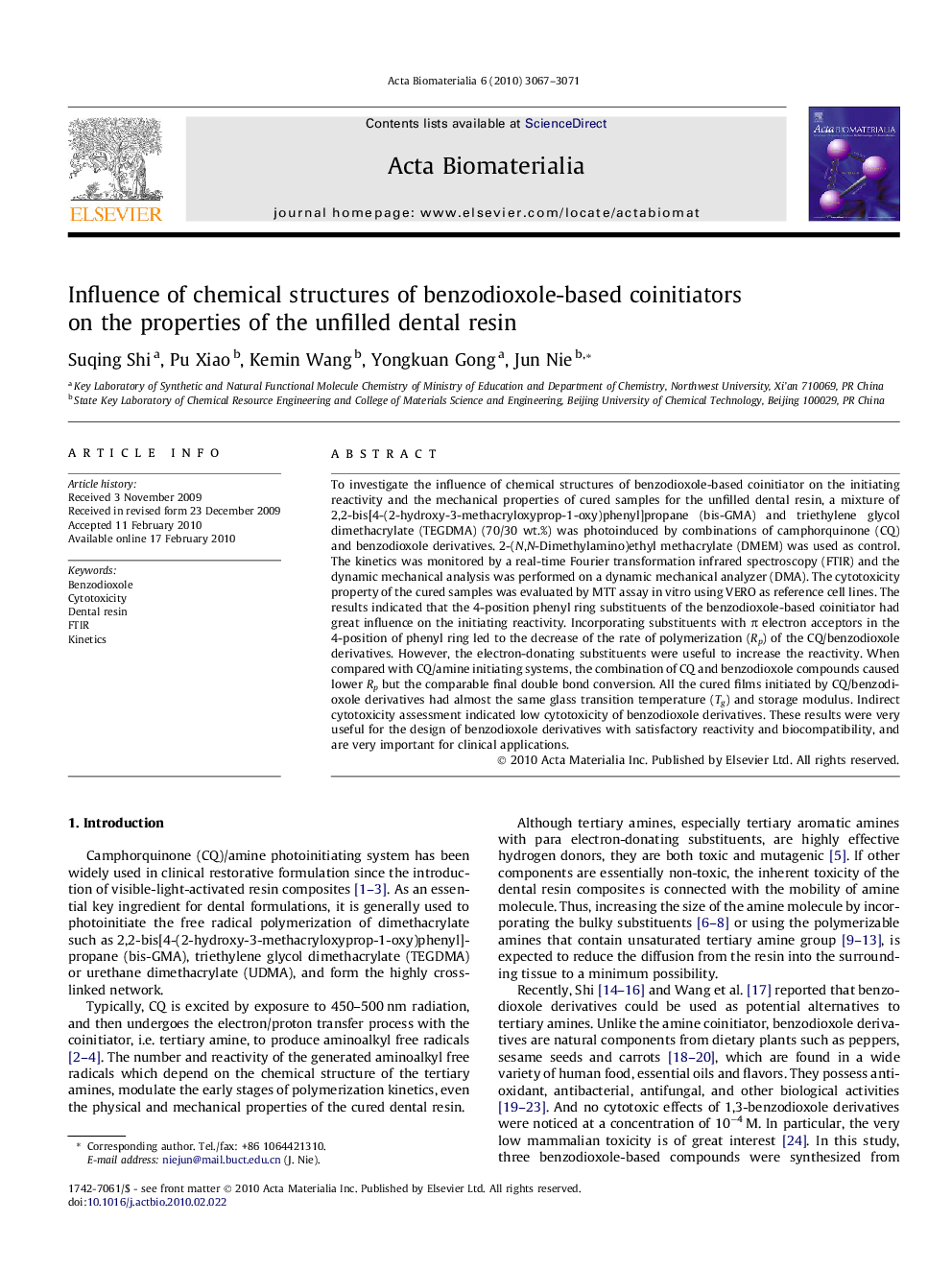| Article ID | Journal | Published Year | Pages | File Type |
|---|---|---|---|---|
| 2269 | Acta Biomaterialia | 2010 | 5 Pages |
To investigate the influence of chemical structures of benzodioxole-based coinitiator on the initiating reactivity and the mechanical properties of cured samples for the unfilled dental resin, a mixture of 2,2-bis[4-(2-hydroxy-3-methacryloxyprop-1-oxy)phenyl]propane (bis-GMA) and triethylene glycol dimethacrylate (TEGDMA) (70/30 wt.%) was photoinduced by combinations of camphorquinone (CQ) and benzodioxole derivatives. 2-(N,N-Dimethylamino)ethyl methacrylate (DMEM) was used as control. The kinetics was monitored by a real-time Fourier transformation infrared spectroscopy (FTIR) and the dynamic mechanical analysis was performed on a dynamic mechanical analyzer (DMA). The cytotoxicity property of the cured samples was evaluated by MTT assay in vitro using VERO as reference cell lines. The results indicated that the 4-position phenyl ring substituents of the benzodioxole-based coinitiator had great influence on the initiating reactivity. Incorporating substituents with π electron acceptors in the 4-position of phenyl ring led to the decrease of the rate of polymerization (Rp) of the CQ/benzodioxole derivatives. However, the electron-donating substituents were useful to increase the reactivity. When compared with CQ/amine initiating systems, the combination of CQ and benzodioxole compounds caused lower Rp but the comparable final double bond conversion. All the cured films initiated by CQ/benzodioxole derivatives had almost the same glass transition temperature (Tg) and storage modulus. Indirect cytotoxicity assessment indicated low cytotoxicity of benzodioxole derivatives. These results were very useful for the design of benzodioxole derivatives with satisfactory reactivity and biocompatibility, and are very important for clinical applications.
